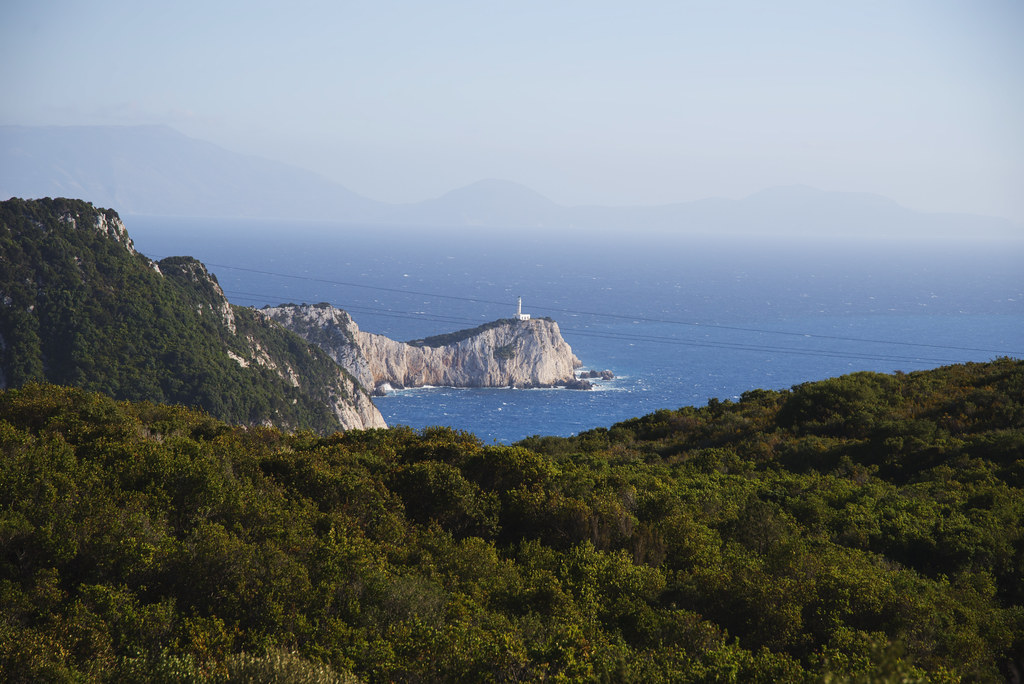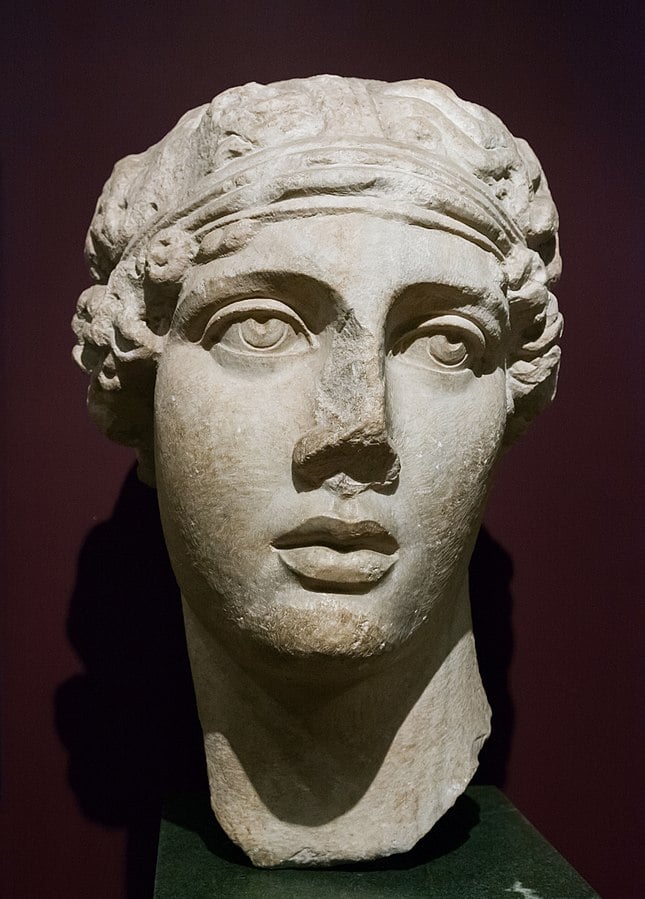
Lefkada, the Greek island in the Ionian sea, is known internationally for its breathtaking landscape and crystalline, turquoise waters.
Yet Lefkada‘s mythic past holds many tragic tales, specifically in terms of the iconic Cape Lefkada, that sits 60 meters (nearly 200 feet) above the Ionian sea, and is topped with the Doukato Lighthouse.
The Cape is located at the southern tip of the island, and its extraordinarily dramatic topography — a sheared-off, towering white cliff jutting off into the turbulent sea — inspired many ancient myths.
According to ancient sources and long-told local myths, lovers and tragic figures throughout the ages have thrown themselves from the craggy heights into the depths of the sea because of unrequited love, rejection, — and even human sacrifice.

The death of Sappho Occurred on Lefkada Island
The most famous of these tragic tales refers to the ancient lyric poet Sappho, who is known for her beautiful poems about women’s lives and their loves, specifically with other women.
According to legend, Sappho died after throwing herself from the Cape, forlorn after a beautiful sea god named Phaon rejected her love.
For this reason, the Cape is known locally as “Sappho’s Leap.”
This tale, although persistent, is thought by some leading scholars to be inaccurate.
Some consider the myth the product of ancient comic poets, mocking Sappho for both her often emotionally charged, tragic love poems, as well as her attraction to women, which is evident from her work. In fact, due to her work, the word “lesbian” comes from the poet’s native island of Lesvos.
Others view the legend as an attempt by later Christian scholars to hide the poet’s sexuality, something they considered shameful, effectively redeeming her by molding her into a heterosexual woman, and therefore considering her poems worthy of study.
Many have linked the tragic story to one of Sappho’s own poems which expounds on the beauty of the sea god, in which the narrator expresses their love for the man.
Scholars have proposed that a misreading of the narrator’s identity as Sappho herself, rather than considering it to be purely a literary device, brought the story about.
Even though the veracity of this particular tale is doubted, many other myths cementing the Cape’s connection to tragedy have cropped up throughout history.

The ancient history of Cape Lefkada
Remains of an ancient temple, thought to be dedicated to the god Apollo, have been found near the tip of Cape Lefkada.
Although scholars have not determined an accurate age for the temple, there is evidence that it served as an asylum, providing even criminals a safe place to stay.
Sources from antiquity also mention an ancient practice of human sacrifice at the site, possibly predating the temple itself, stating that humans — later replaced by animals — were thrown off the cape to appease the gods.
Adding to the list of tragic associations with Cape Lefkada, some versions of the myth of Aphrodite and Adonis end with the goddess of love jumping off its heights after hearing of her lover’s death.
Owing to her status as a goddess, however, she did not die, and landed in the water unharmed.
The island’s name is of debated origin, as some argue that it is named after the mythical figure of Leukatas, who jumped off the island’s cliffs after being relentlessly pursued by Apollo, who had romantic intentions.
Others point to the island’s iconic white cliffs, however, arguing that the name Lefkada comes from the Greek work for white, lefkos. In Homer’s Odyssey, Lefkada is referred to as “Lefki Petri” which means “white rock,” lending credence to the theory.
Doukato Lighthouse
The Cape’s iconic lighthouse, which was built in 1890, is located very near the site of the ancient temple dedicated to Apollo.
Much like the god himself, the lighthouse served as a protector for seafarers, guiding them safely through the sea to shore.
Its location on the very southernmost tip of the island makes the lighthouse a popular tourist attraction. With its dramatic views of the sea from the tall cape, Doukato Lighthouse is a stunning spot to watch the sunset.
From its base, visitors can also see the nearby islands of Ithaki and Kefalonia.
See all the latest news from Greece and the world at Greekreporter.com. Contact our newsroom to report an update or send your story, photos and videos. Follow GR on Google News and subscribe here to our daily email!



